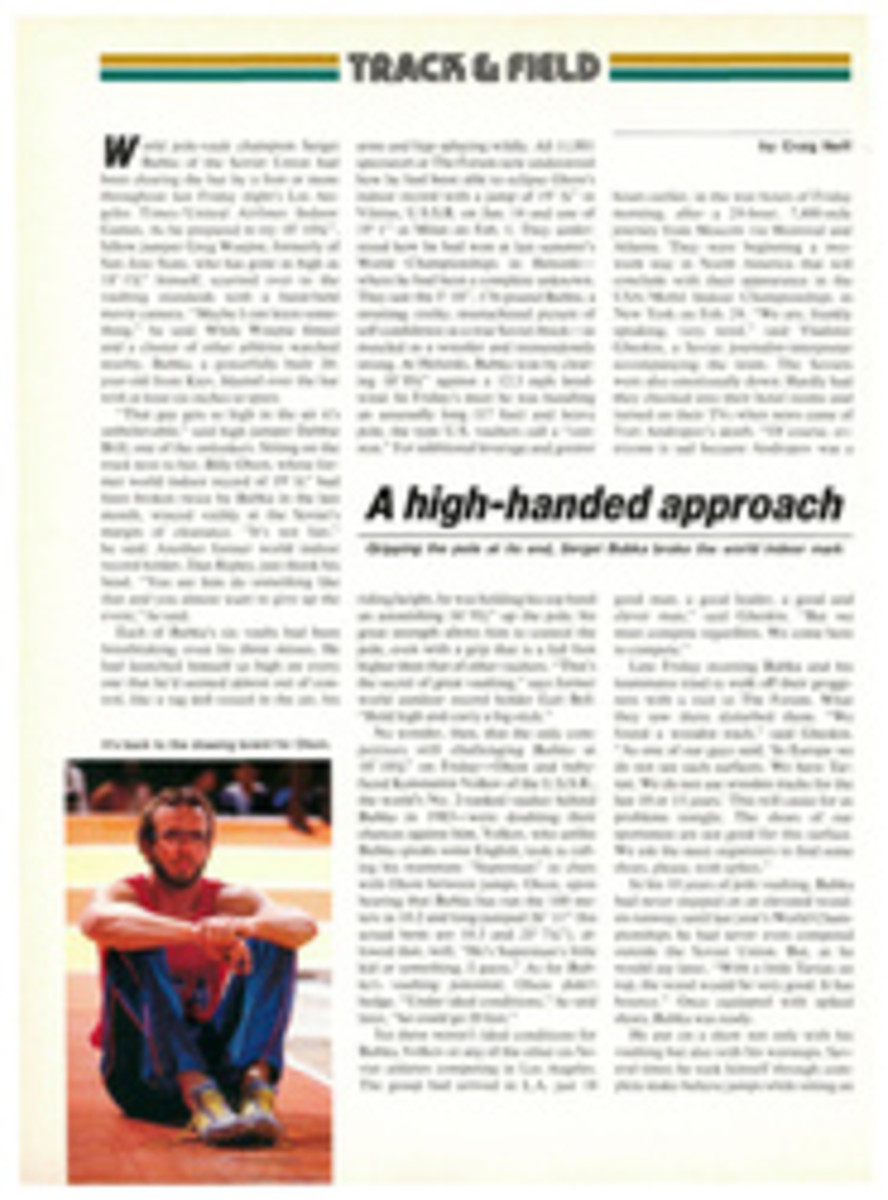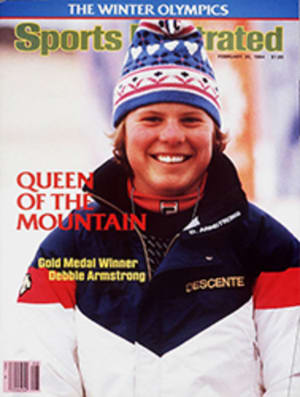
He's finally seen the light
After a recent practice Darryl Dawkins slipped into a natty raw-silk suit and a couple of pounds of gold jewelry and squared up to a full-length mirror. His image "jumped out of the glass and gave me a hug, I looked so good," said Dawkins. Mainly because of the way Dawkins jingle-jangle-jingled in games past, the NBA has banned wearing jewelry on court. "I was Mr. T before Mr. T was cool enough to be Mr. T," says Double D now.
Same old Dawkins, right? All show, no go? Wrong.
"There was a time when I knew I could do it all," says the 6'11" center of the New Jersey Nets who's in his ninth NBA season. "Not only dunk and rebound but dribble behind my back on the fast break and pull up for the jumper. Now I know things aren't that easy. Now I'm trying to learn what I really can and can't do."
This season that learning process has resulted in Dawkins' most consistent play since he entered the NBA as an 18-year-old in 1975, right out of Maynard Evans High in Orlando, Fla. After his 25-point performance in the Nets' 107-103 win over the Houston Rockets on Sunday, Dawkins' scoring average (16.3) was the highest of his pro career. More important, though. Dawkins has been on the court more than ever before, a result of smarter defensive play and shrewder avoidance of foul trouble. Before this season, Dawkins' career average was a ridiculously low 23.5 minutes per game. This season the number is 30.2 minutes. His field-goal percentage of .596 is fourth best in the league, a sure sign that he has eschewed the 15-foot jumper for easier shots closer to the basket. And he's eighth best in the NBA in blocked shots (1.9 a game), another sign of smarter play.
"I've had some mediocre games this season and even some poor ones, but for the most part I think I've been pretty decent," Dawkins says. "In fact, I've probably had more good games so far than I did all of last season."
The same cannot be said of Dawkins' team. Last year the Nets had the seventh-best record in the league, 49-33, before being swept by the New York Knicks in a playoff miniseries. But this year, a tough early road schedule combined with the difficulty of adjusting to new coach Stan Albeck's system has the Nets at 26-25 and in fourth place in the Atlantic Division, 13 games behind the Boston Celtics.
Albeck will take his chances with the schedule (the Nets have no extended road trips left) and with his other players if Dawkins can keep up the good work. "It's really important for us to guard Darryl's minutes every night this season, because at the end of a game we have to have him in there to have a chance to win," Albeck says. "He's always played with great people, but he's never had to be the person—all the pressure has been on others. More and more now it's being placed on him."
To many who have followed Dawkins since he skipped college to join the Philadelphia 76ers for the 1975-76 season, it's about time he lived up to his potential. Possessed of enormous talent and grace for one so large—he was 6'10", 240 pounds when he was 18—Dawkins was forced to sit and watch for much of his first two seasons in Philadelphia. In those days the Sixers were a high-wire act featuring superstars like George McGinnis and Julius Erving and undisciplined talents like Lloyd Free and Joe Bryant. Unfortunately, there was only one ball. Billy Cunningham replaced Gene Shue as coach six games into the 1977-78 season, and Dawkins got more light. Over the next five years he showed flashes of brilliance, but more often than not he would play erratically, which may have been because of insufficient coaching. In August 1982, the 76ers unloaded him to the Nets for a 1983 first-round, draft pick and $700,000. Even though he was only going 78 miles up the Jersey Turnpike, Dawkins was in a funk about being traded away.
In New Jersey his first coach was Larry Brown. "In this league there's always some great soul saver who'll take a chance on a guy," says John Killilea, one of Albeck's assistants. "And you know they'd rather save a seven-foot soul than a 5'11" one." Renowned as a teacher, Brown made some progress with his new pupil, but Dawkins didn't remain in games long enough to put what he had learned to use. In the 1982-83 season he committed an NBA-record 379 personals and fouled out of 23 games, just three shy of the record set by the Fort Wayne Pistons' Don Meineke in 1952-53.
Brown quit near the end of last season to go to the University of Kansas. His successor, Albeck, had coached Kareem Abdul-Jabbar while an assistant at L.A. and Artis Gilmore while an assistant at Kentucky in the ABA and head man with the San Antonio Spurs. "No one's on a par with Kareem in terms of fundamentals, but Darryl's ahead of Artis," Albeck says. "What they both have on Darryl, though, is the understanding of game situations and maturity. They do whatever their team needs to do to win. Darryl hasn't gotten to that point yet."
Only recently has Dawkins admitted that he often resorted to braggadocio to mask feelings of inadequacy on the court. "It's always seemed that I could never be anything less than great," Dawkins says. "I have ups and downs, but my downs always seem so horrible. In Philly the people wanted me to play well, but they really didn't need me. A lot of times I doubted what I could or couldn't do anyway. Now I'm at the point where I can try something and it works and I want to say, 'Damn, I can do this,' and then do it over and over again."
His new coach has helped change Dawkins' attitude. "I've asked him how he wants to be remembered," says Albeck, "as the founding father of Lovetron [the imaginary planet Dawkins dreamed up] or as a great player? If it was going to be as a player, then we'd better get it on." Before the start of the season Albeck put together a 12-minute film of Dawkins committing sundry fouls. Albeck and Dawkins then consulted Darell Garret-son, the NBA chief of officials.
"Oftentimes Darryl would get perfect position to take a charge, but usually he'd get called for the block," Albeck says. "When we asked Garretson why, he said that when the contact was made Darryl often fell down; if a ref sees a big man fall down after being hit by someone smaller, the big guy always has the foul called on him because he must be faking. In essence, Darryl's attempts to emphasize his good position were backfiring on him."
Though Dawkins this season has fouled out of 17 games, he hasn't been committing so many cheap, early fouls that result in heavy pine time. One senior ref has an idea why. "Darryl used to pick up a lot of chintzy fouls," he said. "A guard would be going through the lane and Dawkins would pick him up on a switch and hack him across the arm. He doesn't do much of that anymore."
Nor does he do so much fretting about the mistakes he does make. "There was a time when if a guy put some numbers up on me, scored 30 or 40 points, I couldn't sleep that night just from trying to figure out some way to get him back," he says. "I felt I had to stop him and be great myself. Now I don't worry about any of it. I sleep like a baby every night. I've learned that there's always a next time."
PHOTO
Dawkins is hitting percentage shots...
PHOTO
...and is the eighth best in the NBA on the block.
PHOTO
DD still commits unnecessary fouls...
PHOTO
...but gives Albeck a lot to shout about.

